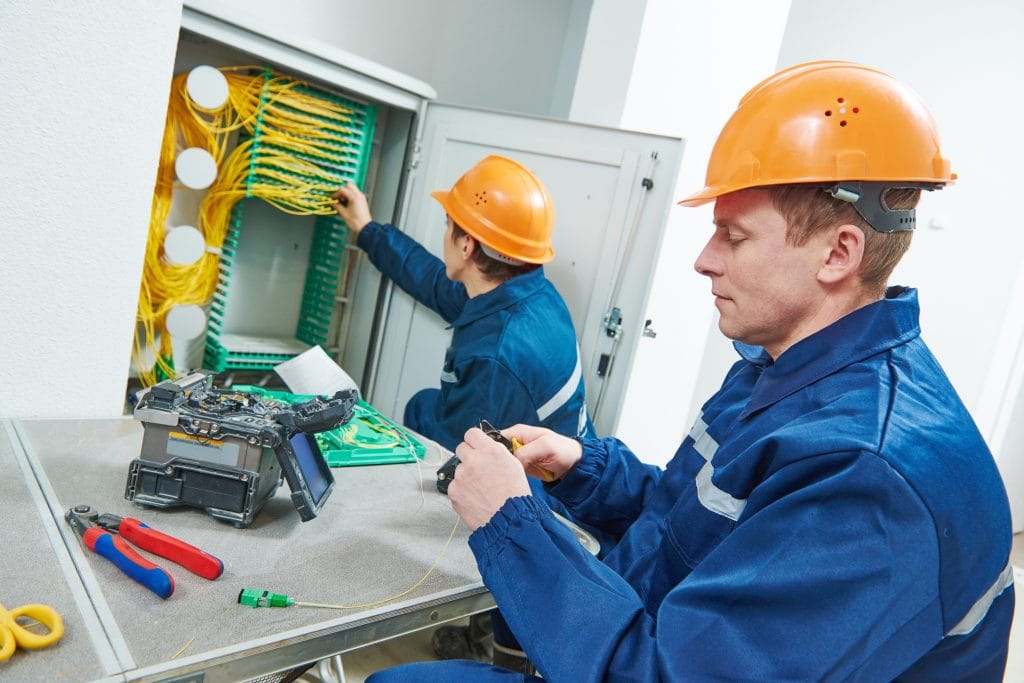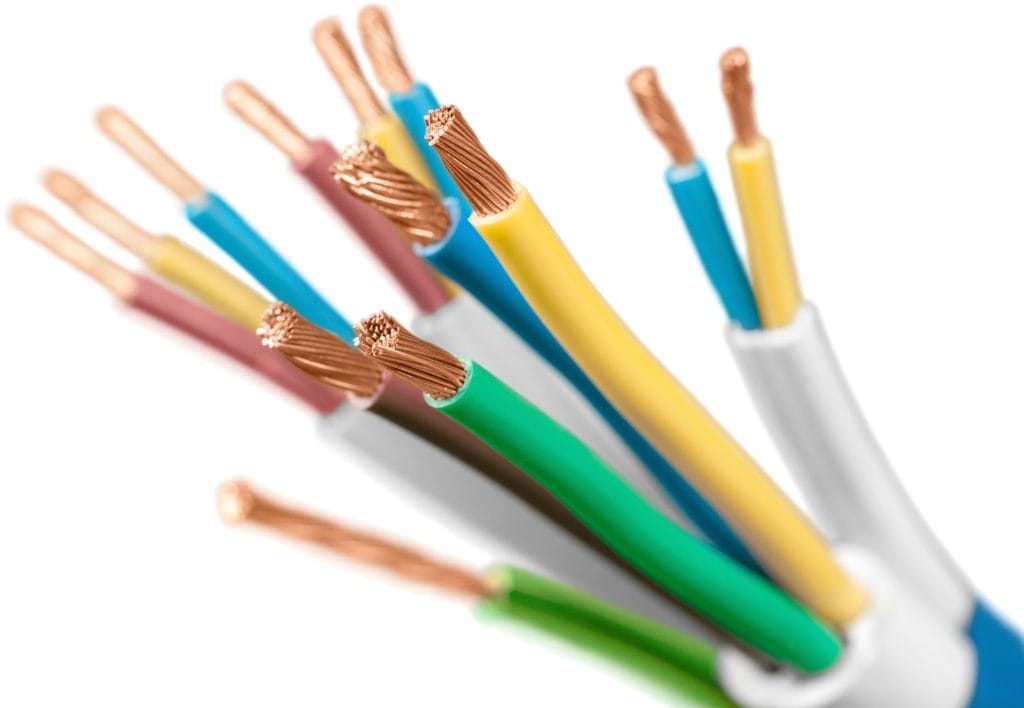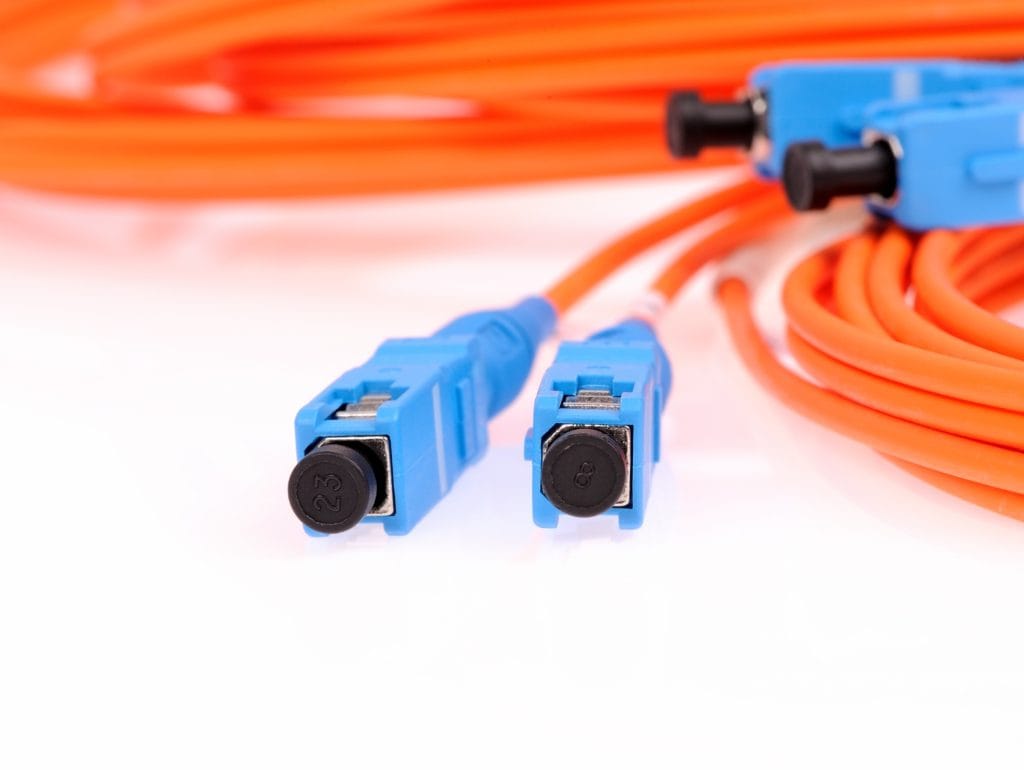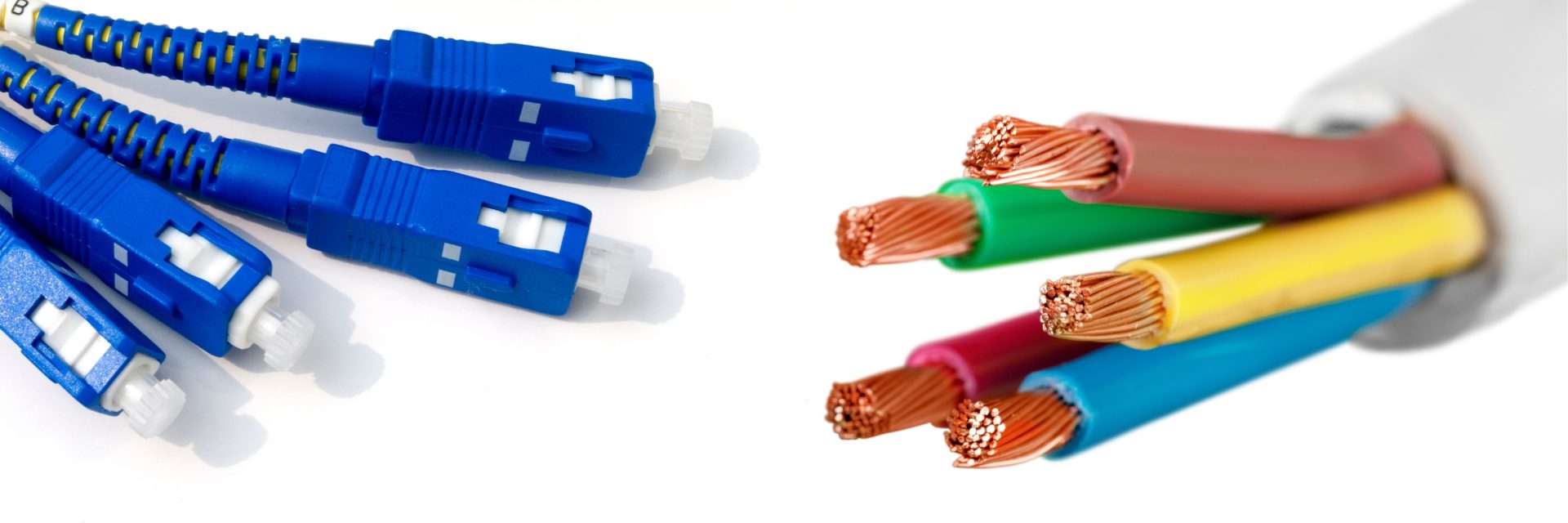Two cables dominate the world of telecommunications and the internet: fibre optic and copper cables. But which solution is best for your requirements? Continue reading this blog so that you can make an informed decision.
What Is The Role Of A Fibre Optic Cable?

Fibre optic cables consist of glass strands encased in an insulated cladding.
The glass strands are almost as thin as human hair, and each strand has a core, providing the pathway for light to travel. This pathway is important because it is how data travels.
Light pulses pass through the core of the tiny strands of glass with the information coded in its rays.
The cladding surrounding the glass strands reflects the light inward, which has many benefits.
First, it allows light to bounce repeatedly against the glass walls, helping to avoid signal loss.
Secondly, it enables light to travel through the strands, even if there are bends in the cable.
Two types of optic fibre cables are used: Single-Mode Fibre (SMF) and Multi-Mode Fibre (MMF).
The SMF cable has a narrow core, enabling only one ray/colour of light. This type transmits data over long distances because it has a high bandwidth.
The MMF cable has a wide core, enabling several rays/colours of light. LEDs generate the light in MMF. This type of cable transports information over short distances.
What Are Copper Cables?

Copper is a highly effective conductor of electricity and heat, hence why the material has been used in wiring for many decades, particularly during the rise of telecommunications and the internet.
A copper cable consists of a conductor, insulation, bedding, armour, and sheathing.
The conductor, made up of long strands of copper wire, triggers the flow of electrons, forming electrical pulses. Information is transmitted from one place to another via these electrical pulses.
There are different types of copper cables, such as straight-through and crossover cables.
A straight-through copper cable connects different devices, i.e. to connect a computer to a router.
A Crossover copper cable connects devices of the same type, i.e. a computer to another.
Fibre Optic Cables: Advantages And Disadvantages

Below are some of the benefits of fibre optic cables:
Increased bandwidth
The higher the bandwidth, the faster your internet transmits large amounts of data. This is excellent news for businesses where transferring large files of information at high speeds and over long distances is necessary for their success.
Strong data security
Because fibre optic cables send information via light, they don’t radiate electromagnetic energy (EMI), meaning they are immune from electronic eavesdroppers, i.e. hackers trying to steal data.
Perfect for long-distance connectivity
Fibre optic cables can carry data over long distances (particularly SMF cables because of their high bandwidth) without the light losing its strength, meaning there is also a reduced risk of signal loss.
Fast speeds
The speed of light is fast! Although fibre optic cables can’t reach the speed of light, they are only 31% slower. Businesses of specific industries need high-speed connectivity, for example, the gaming industry; the closer to the rate of light their internet speeds are, the better!
Strong reliability
Fibre optic cables are waterproof and heatproof, so they are unlikely to be affected by the weather. The durability of fibre optic cables means that your business won’t have to stop unnecessarily and hinder productivity within the office, making them a reliable and safe choice.
The main disadvantage of fibre optic cables is that they cost significantly more than copper cables to install.
However, fibre optic cables are more robust than copper cables; they can withstand high temperatures, different weather conditions, and high amounts of pressure, so it is unlikely they’ll need replacing often. The lifespan of a fibre optic cable is at least ten years and beyond!
Copper Cable: Advantages And Disadvantages

Below are some of the benefits and downfalls of copper cables:
Highly effective conductor
Of all the non-precious metals, copper has the highest electrical conductivity (second only to silver). Conductivity is the measurement of an electrical charge transmitted by a material.
Resistant to corrosion
Copper doesn’t deteriorate fast, mainly because it is resistant to corrosion. It is used in moist environments.
Flexible and durable
Because it is strong and bendable, copper is a material that doesn’t break easily, so it can be shaped and twisted without much risk of losing its durability.
The main disadvantage of copper cables is that they produce electromagnetic energy (EMI).
This may cause interference and noise across the network, impacting the quality and speed of data transmission.
Because copper cables produce EMI, they are less secure than fibre optic cables.
Which Cabling Solution Is Best For Me?

There are advantages and disadvantages to both fibre optic cables and copper cables. The type of cable you acquire will depend on your individual needs, such as the reliability, speed, and broadband you require and your budget.
Ultimately, copper cables have been used for a long time, and there is still a market for this more affordable solution to connect. However, fibre optic cables are built for the future since they are well-equipped for technological advances.
Furthermore, optical fibre cables can keep up with the increasing network demand of businesses and homes because they can easily accommodate higher gigabit speeds.
The uses of fibre optic cables are growing, improving how businesses operate and their output.
Altimex provides several fibre optic cabling solutions, such as fibre optic patch cords. You can ensure you set your business up with the right equipment to enable better connectivity and speed, increasing staff performance and productivity.
Contact us today if you need any assistance with your fibre optic needs.


